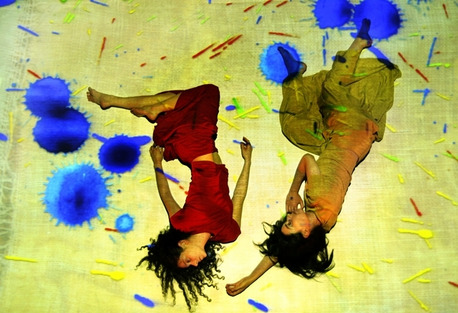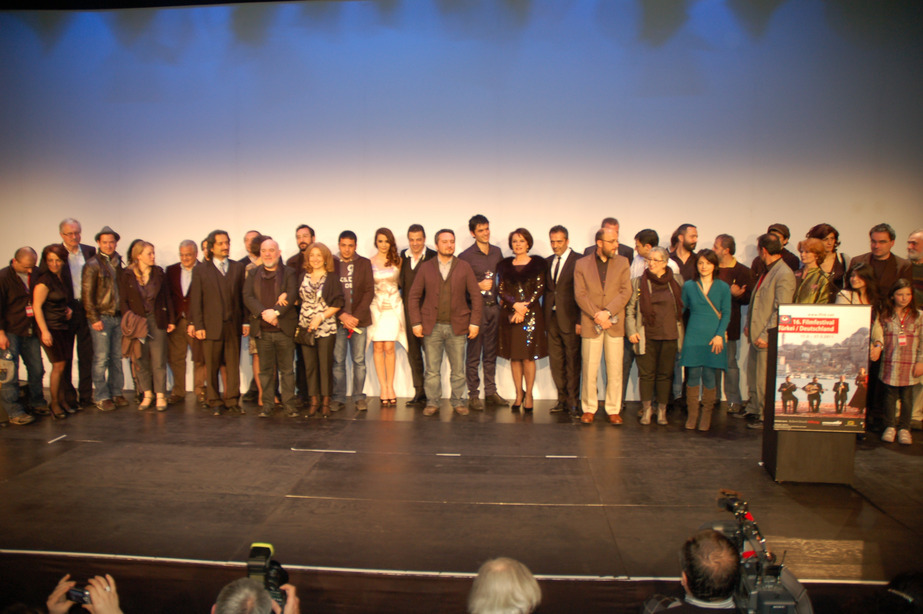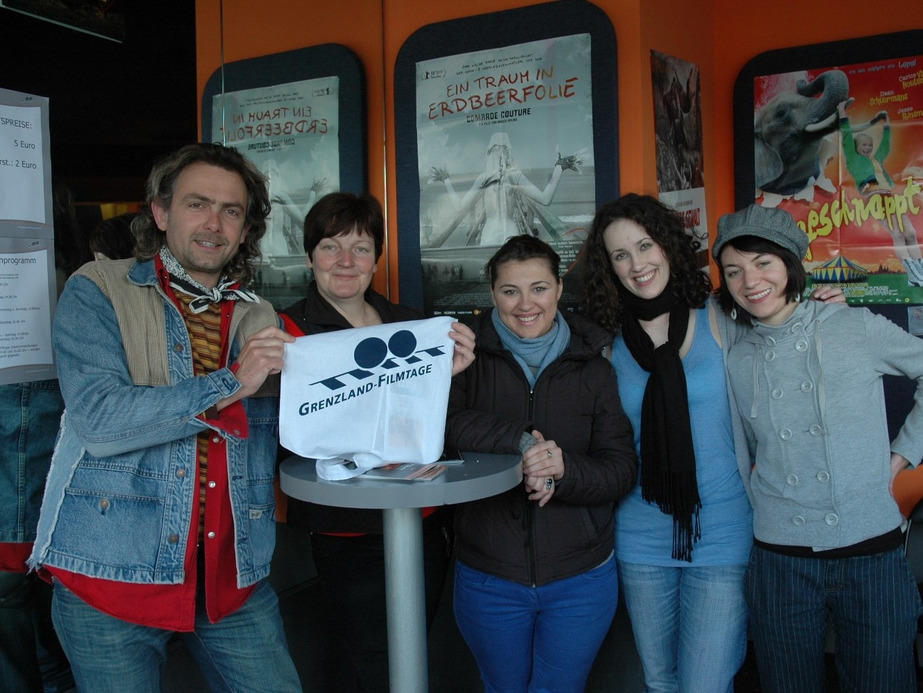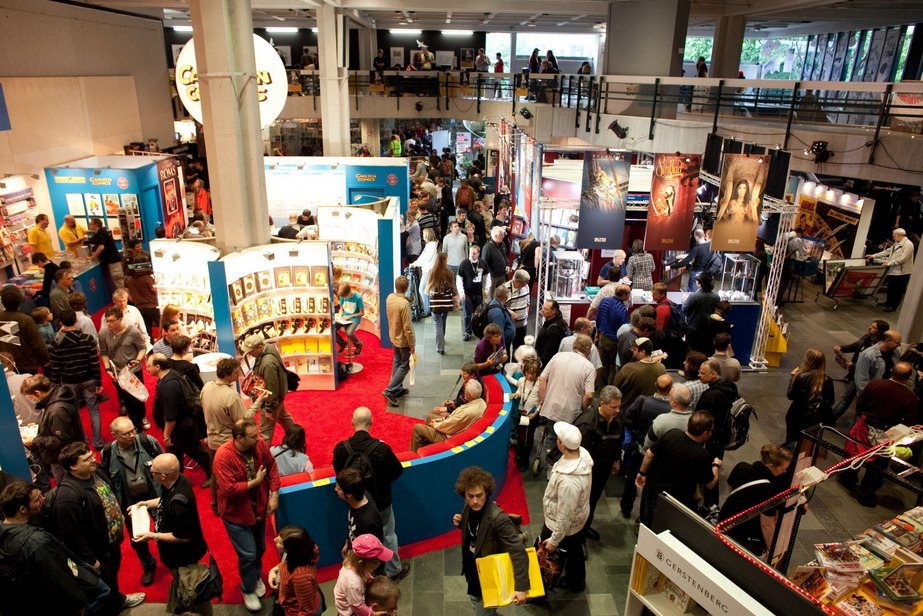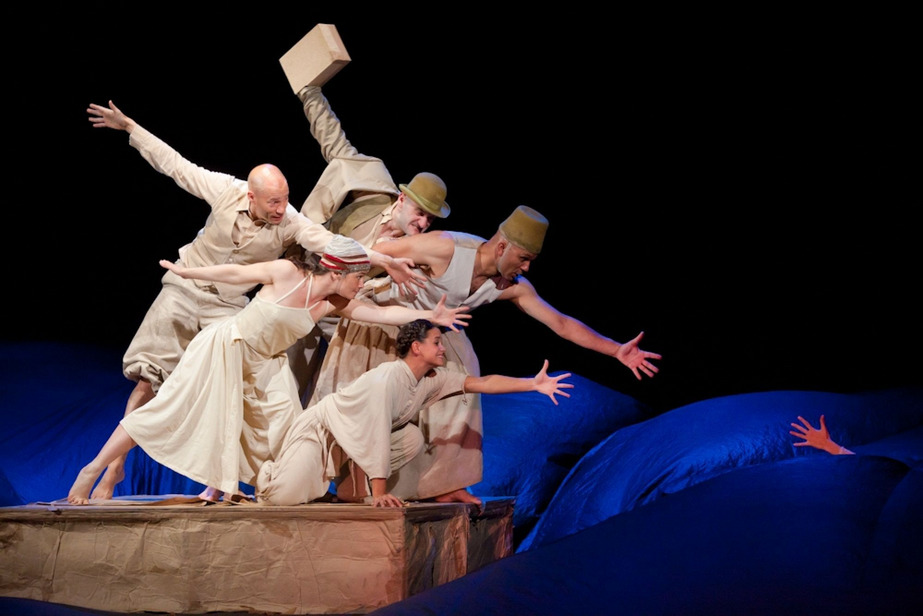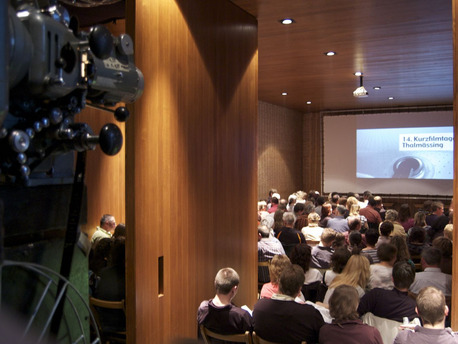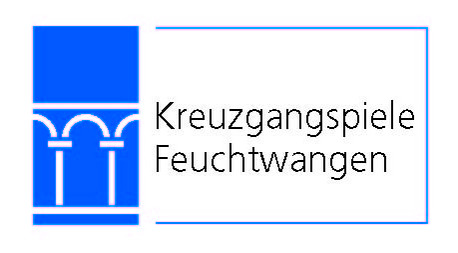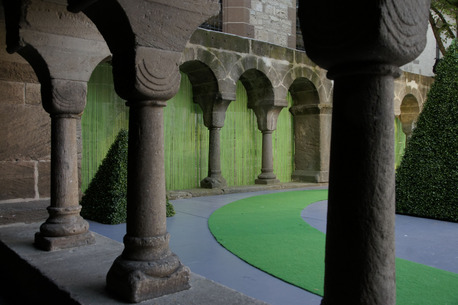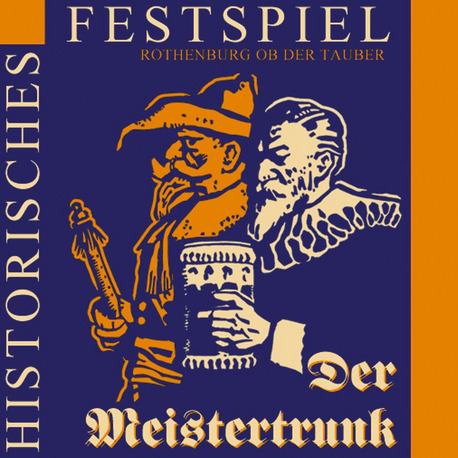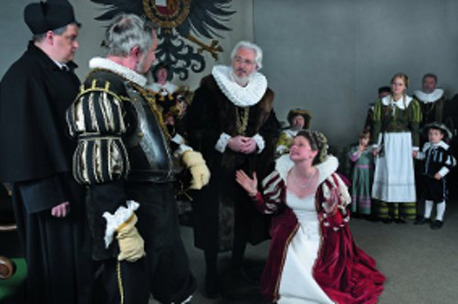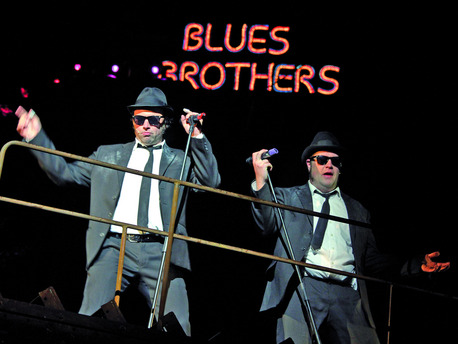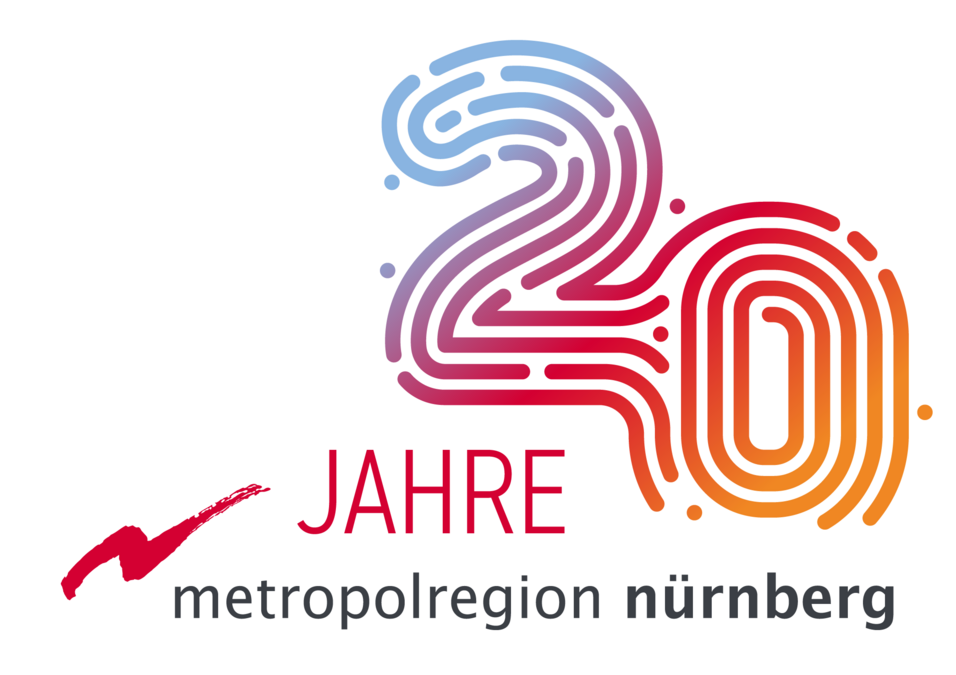
Festivals in the Nuremberg Metropolitan Region
Concerts, clubs, live events
The Nuremberg Metropolitan Region boasts a density, diversity, and quality of festivals like no other region in Germany: The sounds of rock musicians, international DJs, blues greats, virtuosos of the classical music world, and singer-songwriters attract people to places that are as diverse as they are original. Actors and puppeteers captivate audiences with their film and theater art, while authors read their works beneath the summer sky.
Continue scrolling and immerse yourself in the fascinating world of festivals in the Nuremberg Metropolitan Region. In addition to various highlights, you will also find a list of events sorted by month on this page.
Clear the stage(s)! From the Bayreuth Festival to Rock im Park
Keep your eyes open! You will find something for the ears here. At the legendary Klassik Open Air, around 120,000 people come every year to listen to the concerts given by the Nuremberg State Philharmonic Orchestra and the Nuremberg Symphony Orchestra while picnicking in the park setting of Luitpoldhain. What’s more, entry is free! Also free is the Bardentreffen, where hundreds of street musicians fill Nuremberg’s city center with their songs. The Bayreuth Festival is famous the world over. The Bamberg Symphony Orchestra is renowned globally. And the music goes on – whether featuring world stars at Rock im Park or insider tips at the Taubertal Festival, techno DJs at Open Beatz in Herzogenaurach, or the Brazilian flair of the Samba Festival in Coburg.
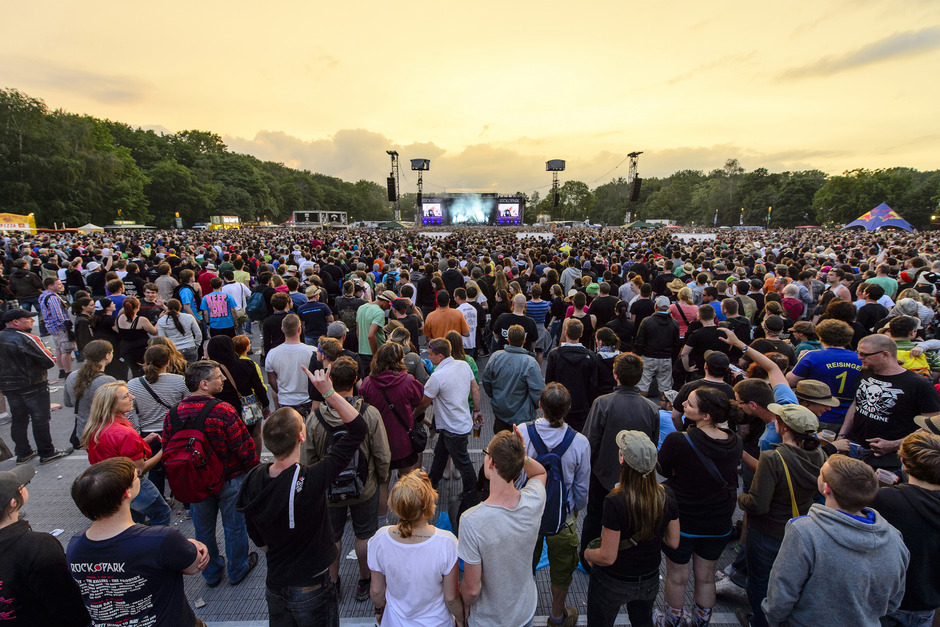
Do you like a bit of drama? Enjoy great movies and great theater here
The Hof International Film Festival is an annual event at which around 130 films are shown in more than 200 screenings over the course of six days in two movie theaters and a total of eight auditoriums. All films are either being shown in Germany for the first time or are world premieres. The Luisenburg Festival is an open-air event that showcases contemporary theater on a spectacular stage made of natural stone. The bespoke productions attract up to 150,000 spectators every year, who are given the opportunity to enjoy the live experience of both modern plays and classical drama. The Coburg State Theater puts on a wide range of stage productions ranging from opera and ballet to drama, all in a magnificent palace.
And that is only the start: From Nuremberg State Theater to a number of smaller stages, not to mention the Poets’ Festival in Erlangen and poetry slams in cultural centers and pubs, the events in the Nuremberg Metropolitan Region are as diverse as this unique region itself.
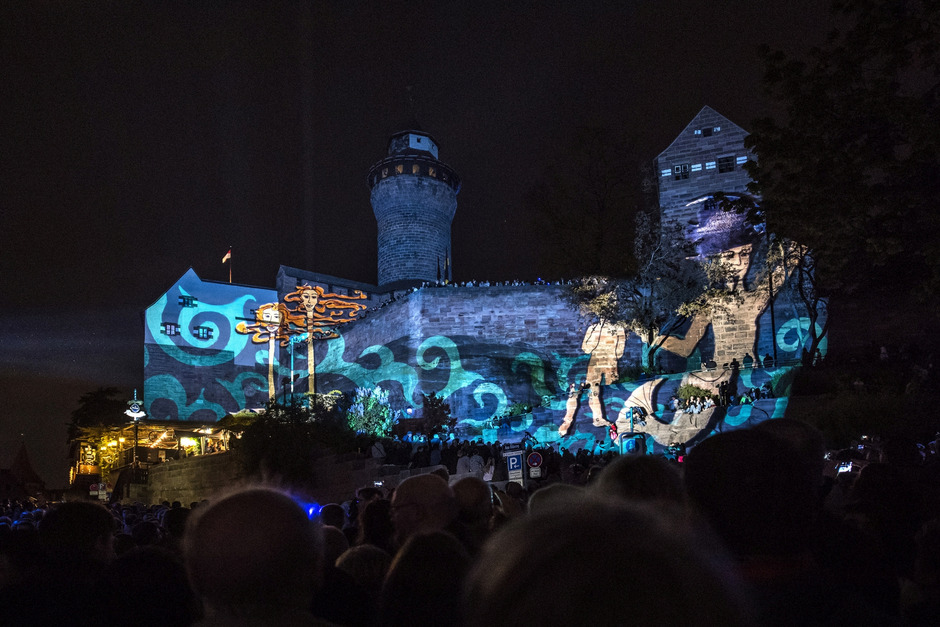
Enjoy magical festivals together
Fairs, civic festivals, and markets are a unique expression of how we enjoy life. Throughout the year, countless festivals in our cities and districts are places where people get together. Every season has its own unique festivals and almost every city and district has a special gem, such as Bamberg Does Magic, Weiden Is Dreaming, or Kronach in Lights.
Discover the many festivals and events in the Nuremberg Metropolitan Region from January to December – you are sure to be enraptured.
The following are just a few of a long list of outstanding cultural examples
Overview of open air, festivals and events
panoptikum (2026) – children’s theater from Bavaria and Europe
Nuremberg celebrated its 950th anniversary in the year 2000. The Theater Mummpitz took this milestone as an opportunity to invite ten enjoyable European theater productions to perform for children and thus also give the younger people of Nuremberg something to celebrate at the beginning of the anniversary year. This European children’s theater festival known as panoptikum was a resounding success – going down very well with the general public and professional theatergoers alike. Almost all performances were sold out at the beginning of the festival, delighting members of the press and audience in equal measure.
Since then, panoptikum has established itself as an event that wishes to showcase the range of European and Bavarian children’s theater. It also aims to promote dialogue, strengthen contacts, and present new companies, materials, and forms. panoptikum is an event organized by the Theater Mummpitz Nuremberg and has been awarded the EFFE Label (Europe for Festivals, Festivals for Europe) as one of “Europe’s finest festivals.”
Further information: www.festival-panoptikum.de
Ebrach Summer Music Festival
Even though summer is typically still a long way off in January, the Ebrach Summer Music Festival kicks off at the start of the year with the first concerts, before reaching its climax in the summer months and carrying on into September.
“In Ebrach, in Franconia, stands a golden abbey.” – These winged words were used as far back as the baroque period to praise the site of the magnificent former Cistercian monastery in the heart of the Steigerwald region. And to this today, every visitor is awestruck by the special atmosphere and magic of the place, which is surrounded by mighty beech forests.
In keeping with the rich musical tradition of the Cistercians, the site of the former monastery is brought back to life during the Ebrach Summer Music Festival, when music, architecture, and nature meld together in a unique way. At the heart of the Ebrach Summer Music Festival are the concerts in the Emperor’s Hall. Works from the baroque period can be heard here alongside Viennese classics.
The performance of a Bruckner symphony or choral symphony in the abbey is a particularly special sound experience. The Ebrach Summer Music Festival also makes guest appearances in the historic Regentenbau concert hall in Bad Kissingen and the modern Bamberg concert hall to perform the great works of the Romantic era.
Further information: https://www.ebracher-musiksommer.de
Jewish Music Today Fürth
Every other year, the Jewish Music Today Festival, formerly known as the International Klezmer Festival, takes place in Fürth over a period of ten days. Around 80 musicians from all over the world converge on the cloverleaf city to celebrate the diversity of Jewish music. The festival, which is organized by the city’s office for cultural activities, certainly draws in the crowds, who have been flocking to the concerts in large numbers for many years, often joyfully dancing at the edge of the stage or creating a party atmosphere at concerts where there is no seating. That’s because Jewish music has absorbed influences from a wide variety of cultures and musical styles on account of the centuries-long history of migration of Jews. It is fusion at its very best! And it carries the idea that this music has something unifying that promotes dialogue and understanding.
Further information: www.jewish-music-today.de
Turkey/Germany Film Festival
The Turkey/Germany Film Festival is a German-Turkish film festival that has been held in Nuremberg since 1992. The 11-day event was initially known as the Turkey Film Days and changed its name to the InterFilmFestival in 1998. It has been held under its current name since 2003 and is also internationally renowned as one of the most important intercultural events in Germany. The aim of the festival is to “create a common platform for dialogue between cultural groups from different backgrounds using the aesthetic and informative medium of cinema.”
The film festival is organized by the “InterForum” association and the office for cultural and leisure activities in the city of Nuremberg. It was the recipient of the City of Nuremberg Culture Prize in 1995 and the Ankara International Film Media Prize in 2006. In 2010, festival founder Adil Kaya was awarded the Citizen’s Medal of the City of Nuremberg by Mayor Dr. Ulrich Maly.
Further information: www.fftd.net
Grenzland-Filmtage Selb International Film Festival
The Grenzland-Filmtage Selb International Film Festival was founded in 1977. Every year, this small yet sophisticated festival presents selected films. The festival originally focused on Eastern European cultural heritage, but it now showcases a potpourri of short, documentary, and feature films.
In keeping with the message that has remained unchanged for a number of years, the Grenzland-Filmtage Selb Film Festival wishes to entertain visitors and provide food for thought. Carefully selected film blocks, put together by genre, are shown annually on the second weekend after Easter in Selb’s movie theater.
Further information: www.grenzlandfilmtage-selb.de
Blue Night
Since 2000, the year Nuremberg celebrated its anniversary, THE BLUE NIGHT has been illuminating streets and prominent buildings in Nuremberg’s old town and turning them blue. The Imperial Castle is used as the backdrop for a large-scale projection created by artists from the metropolitan region, while the Hauptmarkt features a video mapping show. Admission to these is free.
The contributions from the roughly 50 participating institutions and initiatives are inspired by the respective theme of the Blue Night. There is an admission fee for the program involving the cultural institutions and the international Blue Night art competition.
In recent years, around 130,000 visitors have strolled around the Blue Night, marking the start of the Nuremberg cultural spring in spectacularly atmospheric fashion.
Further information: https://www.nuernberg.de/internet/dieblauenacht/
Erlangen International Comic Salon
The Erlangen International Comic Salon is more than just the largest fair on the local comic scene. Its organizers also see themselves as “defenders of picture stories against their detractors.” (Frankfurter Allgemeine Zeitung, May 26, 2008).
The Erlangen International Comic Salon has been held every other year since 1984 and is the most important festival for graphic literature in the German-speaking world, having played a not inconsiderable role in comics now also being recognized as an art form in Germany. In an event space extending across some 15,000 square meters, the International Comic Salon’s program marries art and commerce, mainstream and avant-garde. It is both a seismograph and driver of the German industry and reflects the sheer diversity of the genre. More than 25,000 visitors are expected every other year.
At the heart of the Erlangen International Comic Salon is the public fair held at the Heinrich-Lades-Halle Convention Center in Erlangen’s city center. Around 150 exhibitors – German and international publishers, agencies, the comic trade, and comic classes from the universities – present their program here. Numerous new publications are presented to the public for the first time, while well over 300 artists from all over the world can be seen drawing and signing their books.
One important feature of the Erlangen International Comic Salon is the numerous high-caliber exhibitions located throughout the city – featuring solo shows by international comic stars as well as insights into the German-speaking scene, young comic artists, themed exhibitions on comic history, comics and new media, computer animation, and film. Exhibitions have already been dedicated to artists such as Alex Barbier, Baru, Benjamin, Christophe Blain, Nie Chongrui, Derib, Hendrik Dorgathen, Will Eisner, Gipi, Reinhard Kleist, Ralf König, Isabel Kreitz, Don Lawrence, Nicolas Mahler, Lorenzo Mattotti, Max, Moebius, François Schuiten, Art Spiegelman, Joost Swarte, and many more besides.
The Max und Moritz Gala held at Erlangen’s Markgrafentheater is the highlight of the salon. The Max und Moritz Award, endowed by Bulls Press and presented by the city of Erlangen, is the most important award for graphic literature in the German-speaking world. It recognizes the work of outstanding artists, encourages exemplary publishing, and furthers the debate on graphic literature. Albert Uderzo, Jacques Tardi, Alan Moore, and Pierre Christin are all previous winners of the award for lifetime achievement.
The supporting program includes lectures, talks, and discussions with illustrators, authors, journalists, and publishers, comic book readings, drawing competitions, and workshops. On Family Sunday, there are numerous activities for children and young people at reduced admission prices. At the Comic Film Fest in Erlangen’s movie theaters, all kinds of animated films can be seen alongside new comic book adaptations – from the latest anime films to avant-garde productions.
Further information: https://www.comic-salon.de/de
international figuren.theater.festival
“What takes place on large theater stages or improvised boards every other year in the Middle Franconian region has evolved over the last 30 years from a modest and initially ridiculed puppet party into the most important international showcase of the genre, which for its part has long since broken out of the boundaries of its different varieties. Since this playability of the world knows no bounds, this art form, which has also been drawing on the ‘real’ theater and its increasingly speechless and imageless nature for some time, is so unpredictable and so fascinating at the same time. Puppet theater has come so far. It ventures into the major venues, it no longer excludes images, however fleeting, it experiments with new media, it allows its namesakes to change forms or even discard them, and it draws people deep into its backdrops and stories.”
(Theater heute, No. 8, August/September 2009)
The international figuren.theater.festival is held every other year across the cities of Erlangen, Nuremberg, Fürth, and Schwabach. More than 50 theater groups from all over the world present what is now regarded as contemporary puppet theater in around 100 performances in front of 25,000 visitors over a period of ten days at 20 different venues. On the stage is puppet theater, object and image theater, productions that straddle the borders between dance, performance, and circus, but also those that embrace new media, such as video projections and interactive technologies.
Few other forms of theater have moved beyond their boundaries quite like puppet theater. It has assimilated ideas from other theater disciplines, tried out new formal languages, and piqued interdisciplinary curiosity. The international figuren.theater.festival held in Erlangen, Nuremberg, Fürth, and Schwabach is one of the most important “epicenters” for these theater experiments. Founded in Erlangen in 1979, it has now become not only the largest and most important platform for cross-border and cross-genre theater in the German-speaking world, but also one of the most important festivals for puppet, image, and object theater worldwide.
The supporting program includes street theater, exhibitions, films and workshops, lectures, production talks, discussions, and, in cooperation with the Institute for Theater and Media Studies at the FAU Erlangen-Nuremberg, the “Young Forum International,” which gives students and young theater artists a platform to present and discuss their work.
Further information: www.figurentheaterfestival.de
Heimspiel Festival Weißenburg
The Heimspiel Festival is closely linked to the Bergwaldtheater Weißenburg. It is rightly considered one of the most beautiful natural stages in southern Germany. Like an amphitheater, it is nestled among a mighty forest of beech trees. Behind the stage, a steep rock face rises upward, because the place where theater is now staged and festivals are held was once a quarry, from which the people of Weißenburg obtained the material for their houses in the city.
The fundamental idea behind Heimspiel is to give pop and youth culture a firm and permanent home in rural areas. Partly for the bands that are emerging here in the region, yet have hardly any opportunities to perform because more and more clubs and music venues have closed, but also for the audience, who are shown that urban pop music in Bavaria in the 21st century is no longer only the preserve of the big cities.
Further information: https://www.heimspiel-weissenburg.de
Franconian Bratwurst Summit (Pegnitz)
Butchers from three Franconian administrative districts and other regions present their very special bratwurst creations to the public at this event. Besides providing the opportunity to enjoy and promote Franconian bratwurst culture, the competition is also about crowning the “Franconian Bratwurst King.” To this end, the participating artisanal butchers each submit a classic and a creative bratwurst creation, which are then judged by a panel of experts.
Visitors can expect a wide variety of bratwurst served fresh from the grill by Franconian butchers as well as a constantly changing selection of guest butchers, plus vegetarian and vegan dishes, coffee, pastries, cakes, and non-alcoholic and alcoholic beverages from regional suppliers. Entry is free.
Further information: https://www.fraenkische-bratwurstkultur.de/
Thalmässing Short Film Festival
The Thalmässing Short Film Festival has been held annually in May since 1995. Films with a maximum length of 15 minutes are screened. All kinds of works can be seen, including animation, features, documentaries, videos, and black-and-white and color films, both with and without words. In the film competition, the first two prizes are chosen by the audience, while the team decides on the third prize. In addition, a special prize is awarded by the Eichstätt Media Center.
Further information: https://www.kurzfilm-thalmaessing.de/
Feuchtwangen Cloister Plays
Feuchtwangen is one of Germany’s great and most traditional festival venues. Open-air theater has been performed in the heart of the city since 1949. From May to August, thousands of people flock to the summer festival to experience high dramatic art in the idyllic monastery garden of the former Benedictine monastery against the romantic backdrop of the cloister and the magnificent panorama of the imposing church. The festival is dedicated to classical straight plays.
The program mainly includes classics of the theater world: Goldoni, Schiller, Lessing, Goethe, Molière, Kleist … and plenty of Shakespeare. In the cloister square, Romeo has wept over his Juliet, the Imaginary Invalid has been mocked, Richard III has forged his murder plots, the Good Soldier Švejk has had his fun, and Goethe’s Faust has made a pact with Mephisto. Since the festival was founded, more than 1.6 million guests have been mesmerized by Shakespeare and his fellow writers.
Experienced artistic directors as well as actors and actresses from all over the German-speaking world have been instrumental in shaping the festival’s success story for decades. Countless well-known and great actors have left their artistic calling card in Feuchtwangen, including Hans Clarin, Bruni Löbel, Inge Meysel, Hartmut Reck, Ellen Schwiers, Udo Thomer, Thekla Carola Wied, and Rosel Zech.
Further information: www.kreuzgangspiele.de
Franconian Summer of Theater
Since 1994, the Franconian Summer of Theater – State Theater of Upper Franconia – has been performing as a traveling theater company throughout Upper Franconia and the neighboring districts. Its home stage is the St. Gangolf Cultural Center in Hollfeld. The Franconian Summer of Theater, which has been suffixed with the title Landesbühne Oberfranken (State Theater of Upper Franconia) since 2007, now stages a good 200 events across more than 70 venues. The ensemble uses palaces, castles, parks, market squares, museums, and caves as its stage.
Further information: https://theatersommer.de
The Rothenburg Master Draught Festival
At Pentecost for more than 130 years, the town of Rothenburg has embarked on a journey through time – back to the year 1631, amid the turmoil of the Thirty Years’ War. 700 actors from the association known as the “Historical Festival ›The Master Draught‹” bring the past to life at Pentecost with real commitment and attention to detail, creating a very special, authentic, and familiar atmosphere against the incomparable backdrop of the medieval town high above the Tauber Valley.
The play depicts the siege and conquest of the Protestant city by the troops of the Catholic League under the command of Count von Tilly. In the course of a court martial, he initially orders the pillage and destruction of Rothenburg. Intoxicated by Franconian wine, however, he proposes an unusual deal to the fully assembled city council: “If one of you has the strength and courage to empty the cup in one go, then I will show mercy, forget guilt!”
The cup holds three and a quarter liters, no easy task … but the mayor at the time, Georg Nusch, takes on the bet and pulls off the seemingly impossible. With his “Master Draught” he saves the city!
Visitors can witness the dramatic hours between hope and fear every day during the Pentecost period, when the story of the Master Draught is performed as a play in the Emperor’s Hall at the town hall – the historical scene of the event itself. More than 130 performers take to the stage in historically authentic costumes and uniforms. And they can share in the joy and relief following the happy salvation because it is celebrated on a grand scale!
The highlight of the Pentecost celebrations is the army procession on Sunday, with more than 50 groups taking part – from the stately Swedes in their uniforms, complete with panaches and colorful sashes, to the wild Croats, who like to showcase their riding skills by standing on horseback. Then there are the sutlers, who, with their authentic harmonious singing, show that they are capable of more than people might expect at first glance as they scream, quarrel, and wrestle their way through the streets.
No fewer than 145 horses and 17 historic carriages take part in this procession, which starts at the hospital gate in the south and makes its way through the old town to the historic field camps outside the town’s eastern gates, where battle-hardened soldiers demonstrate their skills in exhibition battles, while cooks can be observed plucking chickens and chopping vegetables. Those who feel hungry themselves will find plenty of refreshment options on offer from the festival hosts near the Gallows Gate (Galgentor) along with musical entertainment.
And anyone who wants to take home a souvenir from their journey back in time to the 17th century are sure to find what they are looking for at the merchants’ and craftsmen’s market on Grüner Markt and by the Jakobskirche in the heart of the old town. In addition to Pentecost, the play depicting the salvation of Rothenburg is also performed during the Imperial City Days in September and the Rothenburg Autumn in October.
Further information: www.meistertrunk.de
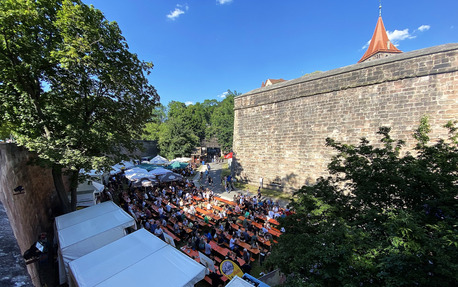
Franconian Beer Festival – Nuremberg
Around 40 Franconian breweries converge on the moat surrounding Nuremberg Castle. A detailed map featuring all the stands and over 40 breweries from Franconia can be found on the website. Besides the numerous breweries, there is live music and good food. Beer festival enthusiasts can once again expect a varied program in the moat this year in addition to the selected Franconian breweries.
Music, food, and beer at the Franconian Beer Festival
The Franconian Beer Festival in Nuremberg is a traditional beer festival that has been held each June in Nuremberg for a number of years. It is one of the city’s most popular festivals and attracts thousands of visitors every year. The beer festival is not only of interest to those who like to drink beer, but also those who love to have a good time at a vibrant festival. There is plenty to see and discover at the Franconian Beer Festival. There are various musical acts and pavilions serving local specialties. Visitors can sample a wide range of Franconian beers and chat to the locals about their craft. The beer festival also offers a real variety of culinary delights. In the many tents people will find everything from regional cuisine to international food. There are also unique specialties that can only be found at the beer festival. In addition to tasting beer and savoring culinary delights, the beer festival provides many other forms of entertainment. The Franconian Beer Festival is a special event for everyone … whether they drink beer or not!
Further information: https://www.bierfest-franken.de
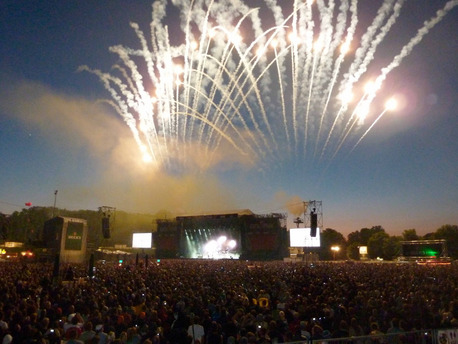
Rock im Park – music festival in Nuremberg
Rock im Park is one of the most popular festivals in Europe and, with around 60,000 people going every year, it is a real crowd-puller.
Rock im Park has been held in Nuremberg since 1997. On three stages – the Center Stage, the Alterna Stage, and the Club Stage – music fans are treated to a veritable feast of international bands on the first weekend in June. The three-day event typically sees various superstars of the modern music scene come together. What’s special about Rock im Park is that it takes place in the heart of Nuremberg, with the festival grounds and the camping area forming a kind of “city within the city,” often drawing visitors to the nearby city center for food or shopping between the campsite and the musical acts.
Further information: https://www.rock-im-park.com/en
Metropolmarathon in Fürth and Nuremberg
The Metropolmarathon in Fürth was first held in 2007, although back then it was known as the Jahrhundertmarathon, or “Marathon of the Century.” This was to mark the city of Fürth’s 1000th anniversary. When it was held for a second time in 2008, the name was changed to “Metropolmarathon.” It has been attracting tens of thousands of entrants and spectators for a number of years and has evolved into one of the most popular running events in the Nuremberg Metropolitan Region over the course of time. And its drawing power is set to become even stronger. That’s because the Metropolmarathon connected the cities of Fürth and Nuremberg for the first time in June 2024 with a unique running route.
Premiere of the intercity Sparkassen Metropolmarathon
The focus of the event is on the shared running experience. Different distances – ranging from ten kilometers to half-marathons and the classic marathon – offer the right option to suit all performance levels and age groups. Varied routes, plenty of refreshment stations, and a vibrant supporting program along the entire route as well as in the start/finish area all make for the perfect running event.
Further information: https://metropolmarathon.de
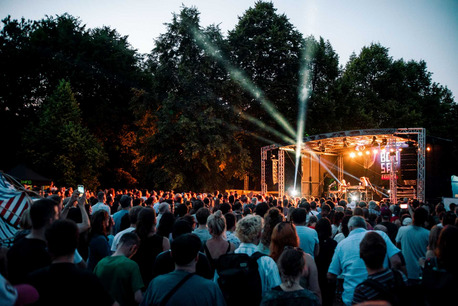
Bonsai Festival
The Bonsai Festival is a cooperation project between the Musikzentrale Nürnberg e. V. and LUISE the cultfactory together with volunteer creative artists who organize the festival in line with their own ideas. Musikzentrale and LUISE take care of financial matters, permits, and infrastructure, while the volunteers focus on aspects such as the program, site layout, public relations, inclusion, and awareness.
The Bonsai Festival is a free outdoor festival held over two days, attracting 1,000 visitors on each day. It is designed to appeal to a wide range of people and groups, both as visitors and contributors. Musically, the live program covers the genres of pop, hip-hop, and rock.
Further information: https://bonsaifestival.de
Luisenburg Festival Wunsiedel
The Luisenburg Festival in Wunsiedel boasts a truly spectacular program, featuring fantastic productions, well-known artists, and plenty of entertainment from June to September. With musicals, comedies, dramas, and stars of the international music scene, the festival is one of the summer events of the year for young and old alike.
Further information: https://www.luisenburg-aktuell.de/
Faust Festival Pottenstein
The Faust Festival in Pottenstein in Franconian Switzerland is an open-air theater event held at the Schüttersmühle in the Klumpertal.
The Faust Festival was founded in 1995 by the two theater practitioners Ulrike Mahr and Daniel Leistner in the Upper Franconian town of Kronach, where the festival was held between 1995 and 2015 at the Rosenberg Fortress. Under the overall direction of Ulrike Mahr and Daniel Leistner, the festival was a resounding success from the very beginning, with 15,000 spectators flocking to the event at Rosenberg Fortress every year.
Following the end of the productions in Kronach, the festival was held at various locations for a few years before a wonderful site at the Schüttersmühle in Pottenstein came up completely unexpectedly at the end of 2019, the considerable potential of which was instantly recognized by Uwe Vogel and Daniel Leistner.
The planned start of the 2020 festival in Pottenstein was prevented by the Covid-19 pandemic. The play also couldn’t be staged in 2021 due to the pandemic. The theater practitioners used the time to professionally develop the site for the festival. Pathways were paved, huts were built, and a considerable amount of earth was moved, giving the Faust Festival not only a breathtaking stage in a wooded and natural setting, but also its own beer garden.
The first festival held in Pottenstein in 2022 proved to be a huge success. The performances were always met with lots of cheering and often standing ovations. The Faust Festival is thus continuing the success story that began in Kronach in 1995 with the same vitality, the same freshness, and the same energy.
Further information: https://faust-festspiele.eu
Erlangen Hill Fair
“The hill calls!” is the cry every year at Pentecost in the beer city of Erlangen and way beyond. That’s because this is the setting for one of the finest and oldest folk festivals in the world. The Oktoberfest in Munich may be bigger and more famous, but the Erlangen Hill Fair (or Bergkirchweih) is older (by no fewer than 55 years).
Year after year, the Erlangen Hill Fair – the oldest beer festival in the world – attracts around one million visitors, transforming the grounds around the castle hill into a lively get-together with music, beer, dancing, fun, and games. Its charm and atmosphere enchant young and old alike from near and far.
Why not let it enchant you too!
Further information: https://www.visit-erlangen.de/bergkirchweih_erlangen/
International Organ Week – Musica Sacra (ION)
First organized in 1951 by the church musicians of St. Lorenz and St. Sebald, the two large Protestant churches in the old town, the International Organ Week Nuremberg – Musica Sacra (ION) is now probably Europe’s largest and oldest festival dedicated to sacred music and organ music. From the outset, the ION has always represented more than “just” organ music: Choral and symphony concerts complement the “Musica Sacra” program, accompanied by scientific symposia and special events for young people aimed at promoting a deeper understanding of the music.
Another element central to the program is the ION’s International Organ Competition, which has been held since 1968 and is one of the most prestigious events of its kind in the world. Reconceived and reorganized, it has been held every other year since 2007 as an interpretation competition alongside the ION concerts. The ION program is rounded off by master classes given by renowned organists as well as numerous devotions and religious services in which church music has a very special significance.
Further information: https://musikfest-ion.de
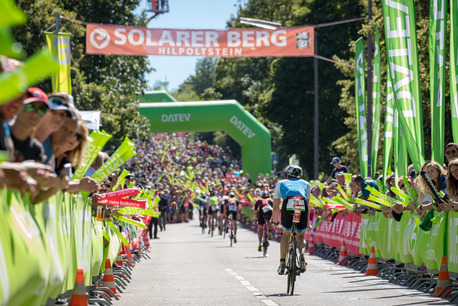
Challenge Roth – Triathlon
Welcome to the greatest long-distance triathlon in the world! Whether as a triathlete, as a supporter on the course, or as one of 7,500 volunteers – dreams really do come true in the triathlon dream factory.
Entrants in the triathlon held in the district of Roth must swim for 3.8 km, cycle for 180 km, and run for 42.2 km. Emotions and goosebumps are guaranteed – at the mythical swim starting point on the Main-Danube Canal, for example, on the legendary hill known as Solarer Berg, or at the magical finish line party in the triathlon stadium.
The sports festival in this triathlon stronghold has been home to triathletes from all over the world since 1984. The “Home of Triathlon” last made history again in 2024, when the Dane Magnus Ditlev and the German Anne Haug smashed the world best times, which had only been set the previous year.
Further information: https://www.challenge-roth.com/en/
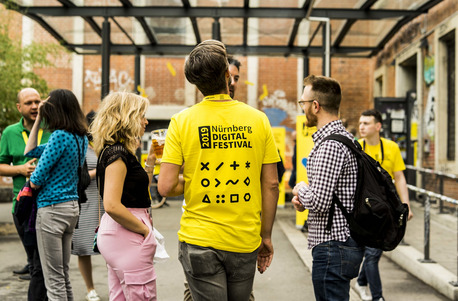
Nürnberg Digital Festival
More than 200 lectures, workshops, exhibitions, (un)conferences, and networking events showcase the region’s economic and creative potential and are mostly free of charge for all participants who are interested in the subject of digitalization and want to work together to shape the digital transformation.
The festival is an open format and serves as a networking platform for players in the metropolitan region on the key subjects of digitalization in business, science, education, and culture. More than 150 regional organizations get involved as organizers to share knowledge, drive innovation, and discuss the opportunities and risks of the digital society.
Further information: https://nuernberg.digital
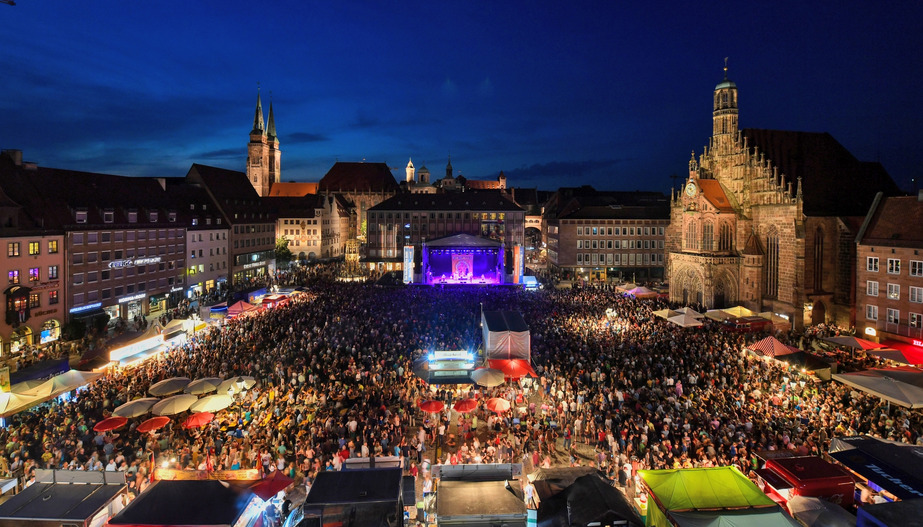
Bardentreffen Nuremberg
The Bardentreffen is an open-air music festival held every summer in Nuremberg. It was held for the first time in 1976 as an amateur singer-songwriter competition to mark the 400th anniversary of the death of the Meistersinger Hans Sachs. More than 200,000 visitors of all ages flock to the picturesque squares and historic courtyards of the old town every year at the end of July – the start of the summer break for schools in Bavaria – to hear singers and groups from all over the world. Admission is free.
The Bardentreffen is Nuremberg’s open-air highlight and a real classic as a festival of world music. The program always has a surprise or two in store and features around 90 concerts on nine stages, alongside hundreds of street musicians, who also appreciate the enthusiastic audience from all over Germany between the official stages.
The Bardentreffen in Nuremberg: Germany’s biggest music festival with free entry
People often use superlatives when talking about the Bardentreffen: The Süddeutsche Zeitung describes it as “the biggest free and outdoor music festival in Germany.” The newspaper even goes so far as to call the traditional festival “Nuremberg’s fifth season.” Every year, the Bardentreffen, which as an open-air format is unrivaled nationwide, sends a fascinating sound cloud of Mediterranean joy floating across the entire old town of Nuremberg. Over the years, this musical festival has played a key role in shaping Nuremberg’s identity and attitude to life.
Further information: https://bardentreffen.nuernberg.de
Bamberg Does Magic
When the summer break comes at Hogwarts, the people of Bamberg, tourists, and artists from all over the world come together to celebrate a truly magical weekend: Bamberg Does Magic!
Every year on the third weekend in July, over 250,000 visitors, more than 1,000 applications from all over the world, 20 performance spaces in the city, national and international artists, and countless magical moments transform Bamberg’s old town into a hotbed of magic.
Magicians and jugglers, clowns and acrobats, stilt walkers and mime artists, fire dancers and comedians, street performers and musicians entertain from noon to midnight and create a world filled with fascinating surprises.
Further information: https://www.bamberg-zaubert.de
International Samba Festival – Coburg
The Samba Festival in Coburg has been taking place since 1992. It is the biggest event of its kind outside Brazil. Every year on the second weekend in July, the historic town center of Coburg is transformed into a mini version of Rio de Janeiro. More than 100 samba groups from all over the world and 3,000 artists attract around 200,000 visitors to the town with their samba sounds.
The Coburg International Samba Festival features samba specialties for every taste. There are dynamic dancers in brightly colored costumes, imaginative shows, Brazilian street samba, and a varied supporting program. The annual highlights are the evening shows on Friday and Saturday on the market square and castle square as well as the colorful parade on Sunday afternoon through the center of Coburg.
Further information: https://www.samba-festival.de
Open Beatz Festival
At the end of July, the Open Beatz electronic music festival transforms the colorful flower meadows, rolling grain fields, and lush meadows near Herzogenaurach into a vibrant festival site. Several spectacular-looking stages featuring names such as Caldera, Stonelands, and Magical Forest are played by top international acts and DJs. At Open Beatz, however, that is only one side of the dance floor, because besides a spacious camping ground, festivalgoers can also enjoy activities such as yoga, dance workshops, and even tandem skydiving.
Further information: https://openbeatz.de/en/home/
Klassik Open Air – Nuremberg
Since the turn of the millennium, the Klassik Open Air in Nuremberg has evolved into an important cultural event. The Luitpoldhain, Europe’s greenest concert hall, is transformed into a unique festival site in July and August. Here, a mixture of classical music connoisseurs, novices, families, and friends all gather for a relaxed picnic accompanied by live music. It is a meeting place for everyone, regardless of musical preferences or cultural background. Around 160,000 visitors flock to the “Woodstock of classical music” every year.
The State Philharmonic Orchestra and the Nuremberg Symphony Orchestra present a varied program at a total of three concerts, where there is also a focus on international soloists. Well-known greats such as Alison Balsom, Martin Grubinger, Daniel Hope, and Andreas Ottensamer have already performed on the stage in the Luitpoldhain.
Further information: https://klassikopenair.nuernberg.de
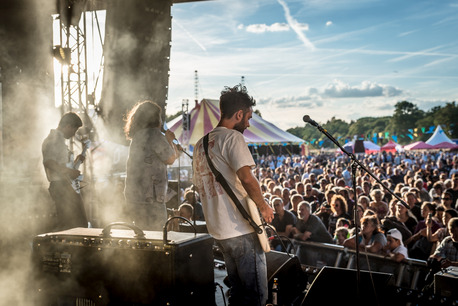
Brückenfestival – Nuremberg
The Brückenfestival is a “free and outdoor” music festival that is held annually in Nuremberg on the banks of the River Pegnitz under Theodor Heuß Bridge. In 2015, the open-air event celebrated its 15th anniversary with up to 30,000 visitors. It is worth emphasizing that the festival is planned and organized by a team of volunteers from the Brückenfestival e. V. association together with between 100 and 150 supporters who give their time for free.
The Brückenfestival wishes to provide a space for new discoveries and experiments, a place where people can experience music and culture. In doing so, it gives them the opportunity to immerse themselves in a unique and lovingly curated little world at the point where a wide variety of musical, artistic, and cultural influences meet. The festival has now established itself as a permanent and influential institution in Nuremberg’s cultural summer, commanding appeal throughout the entire region. Admission is free in order to make sure that this special cultural format remains widely and easily accessible. The festival is therefore largely financed by the sale of drinks.
Further information: https://bruecken-festival.de
Bayreuth Festival
The Bayreuth Festival is an annual music drama event held in the Festspielhaus on Bayreuth’s Green Hill, built specifically for this purpose by Richard Wagner and Otto Brückwald. The festival is dedicated solely to presenting different interpretations of works by Richard Wagner. With consistently spectacular productions and some of the best musicians in the world, the Bayreuth Festival is internationally renowned.
The first festival began on August 13, 1876, but financial failure meant that it could not be held again until 1882. The festival initially took place at irregular intervals. Following the outbreak of the First World War, the 1914 season had to be discontinued. It was not until ten years later – on July 22, 1924 – that the festival was reopened under the direction of Siegfried Wagner.
In 1949, the Society of Friends of Bayreuth was founded, which set itself the goal of raising funds for the festival’s revival. Since the resumption of the festival after the Second World War in 1951, there have been introductory lectures to the productions on all performance days. Wolfgang Wagner was the artistic director of the festival from the time it reopened in 1951 until his retirement on August 31, 2008. At its meeting on September 1, 2008, the Board of Trustees of the Richard Wagner Foundation elected Wolfgang Wagner’s two daughters, Katharina Wagner and Eva Wagner-Pasquier, as the new directors of the Bayreuth Festival.
Further information: www.bayreuther-festspiele.de
Erlangen Poets’ Festival
“The sun is shining, Erlangen has turned into one big poetic playground around its castle, ‘a Salzburg of literature’ (Norbert Niemann), nah, ‘a Woodstock of literature’ (Ingo Schulze). Readers on three podiums showcase what contemporary German fiction has to offer this fall. People sitting at beer tables listen attentively. As an author, it must feel like you’re in paradise here: Anyone who reads from their book in front of more than 1,000 curious people can be forgiven for no longer worrying about sales figures and the ill-tempered nature of the business for a moment. Erlangen is neither Salzburg nor Woodstock, but the transient Garden of Eden of literature.” (Die Zeit, September 4, 2008)
The last weekend in August traditionally heralds the arrival of the German Book Fall in Erlangen. More than 60 authors, publicists, and literary critics from Germany, Austria, and Switzerland gather for readings, talks, and panel discussions. A long weekend featuring a whole host of events linked to the latest literature, the Erlangen Poets’ Festival has evolved into one of the most popular literary events in the German-speaking world since it was founded in 1980. More than 12,000 visitors are expected every year.
Central to the Erlangen Poets’ Festival are the two long reading afternoons on Saturday and Sunday in the Erlangen Schlossgarten (or palace garden). Under the motto “Literatur aktuell” (or “current literature”), many essential new titles are read publicly for the first time and then discussed with eminent literary critics such as Maike Albath, Verena Auffermann, Michael Braun, Wilfried F. Schoeller, Hajo Steinert, Florian Felix Weyh, and others.
The “Young Podium” presents children’s and young people’s literature by renowned authors and offers an attractive supporting program for children and young people. The evenings are reserved for author portraits and the international portrait. Panel discussions and talks on literary as well as cultural and political issues are another aspect of the program. The subject of literary translation is given its own spotlight in the Erlangen translators’ workshop. Every other year, the Erlangen Cultural Foundation presents the “Erlangen Literature Prize for Poetry as Translation” at the Poets’ Festival. Druck & Buch is a book art exhibition that showcases bibliophilic treasures. Other exhibitions round off the program at the Erlangen Poets’ Festival.
The Schlossgarten in the heart of the city, the Markgrafentheater – southern Germany’s oldest baroque theater still in use – and the historic Redoutensaal are the main venues for this late summer literature festival.
Further information: https://www.poetenfest-erlangen.de
Taubertal Festival
The Taubertal Festival, or Taubertal Open Air, is a rock, pop, and hip-hop music festival that has been held annually since 1996 in the Taubertal (or Tauber Valley) near Rothenburg ob der Tauber. It lasts three days and is attended by almost 20,000 festivalgoers. Since 2008, there has been a new after-show concept that uses the quarry near the festival site as the setting for after-show parties.
The high-quality program and good mix of acts promise visitors an unforgettable weekend in the “Valley.” The important thing here is that the connection between audience and band remains direct and tangible. The Taubertal Festival is considered the “club show among festivals.”
Further information: https://taubertal-festival.de
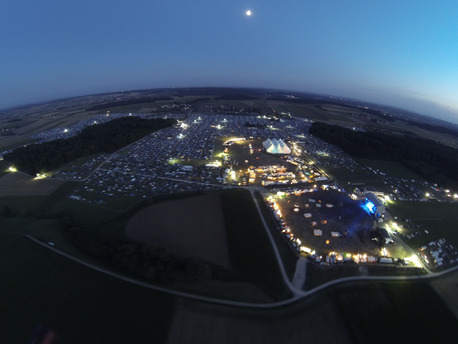
SUMMER BREEZE Open Air – Dinkelsbühl
SUMMER BREEZE Open Air boasts a history dating back more than 15 years and has long since become the festival highlight in the diaries of many metal music fans. The established metal festival is held over three days each August in beautiful Dinkelsbühl on the grounds of the aeroclub between Illenschwang and Sinbronn.
On two open-air stages with no overlaps, in the huge party tent from as early as Wednesday, and on a fourth stage – the Camel Stage next to the party tent – hard sounds fill the ears of the festivalgoers. Anyone who even has a slight soft spot for hard or dark music is cordially invited to attend SUMMER BREEZE Open Air in Dinkelsbühl, Bavaria, in August to celebrate the metal party of the year!
Further information: https://www.summer-breeze.de/en/
Bach Week – Ansbach
The music of Johann Sebastian Bach, performed by the most acclaimed artists in authentic settings – this has been the recipe for success for Bach Week in Ansbach for over 60 years. People come from all over Germany and neighboring countries to hear Bach in the orangery with its magnificent French garden, the baroque church of St. Gumbertus, the Gothic church of St. Johannis, and other atmospheric places in and around the Middle Franconian city where sovereign rulers once resided. Yet they not only come for Bach! The program features more than thirty concerts that are also dedicated to his musical roots and his artistic legacy.
In addition, workshops have been run since 2009 for children and young people aged four to fourteen. In around 24 theme-oriented events, they take part in musical activities to explore the life and work of Bach, his family, and his environment.
Experience Bach up-close!
Further information: https://www.bachwoche.de
Sandkerwa – Bamberg
The citizens’ association from the 4th district and Sandkerwa Veranstaltungs GmbH organize the Sandkerwa in Bamberg each August. A varied program of events runs for just under a week and includes church services and concerts, the raising of the ceremonial tree, the fishermen’s jousting, the rooster strike, and the final firework display. It is a joyous occasion filled with tradition, a sense of community, and culinary delights.
Further information: https://www.sandkerwa.de
Schwabach Art Festival
The Schwabach Art Festival “ortung – Inspired by Gold” was first held in 1999. The special charm of this 16-day biennial event lies in its unusual manner: Between 20 and 25 artists are invited to “play” in everyday spaces in Schwabach’s city center – such as vaults, cellars, old washhouses, attics, private rooms, but also green spaces and cultural spaces (the Old Synagogue, churches, galleries) – by filling them with all forms of art and installations on the theme of “gold.” The result is an art trail for people to follow and experience.
A jury of experts presents the Schwabach Art Prize (€5,000) to the best artistic design.
Further information: www.schwabach.de
Festival of Young Artists – Bayreuth
For 61 years, the Festival of Young Artists Bayreuth has been promoting interculture – a sense of togetherness among cultures. A sense of togetherness among nations. A sense of togetherness among all levels of education. A sense of togetherness among the sexes. A sense of togetherness among the generations.
Interculture between people occurs on an individual, highly personal level – from one person to another. Interculture is the prerequisite for peace between people. For interculture to be achieved, people need profound knowledge about others. What’s more, they need profound knowledge about themselves.
The festival teaches intercultural skills to everyone involved – participants and workshop leaders, organizers and sponsors, but also all visitors and opinion leaders – and guides them all toward active peace work.
The emphasis here is on:
- Educating and training young artists of all nations in the musical sphere
- Creating international encounters with a high peacemaking impact
- Springboard: training cultural managers of all nations in the field of “art and social affairs”
- Involving festival children in the education project
From 1950 to the present day: In a period spanning over 60 years, around 25,000 young people from 80 nations have come to Bayreuth to work with one another and learn from one another.
Further information: https://www.youngartistsbayreuth.de/en/
International Guitar Festival – Hersbruck
The International Guitar Festival in Hersbruck is one of the world’s most important guitar festivals. Under the artistic direction of guitarist Johannes Tonio Kreusch, internationally renowned musicians from the genres of classical, flamenco, fingerstyle, and jazz come to Hersbruck every year and give visitors the opportunity to enjoy a week of “pure guitar” with all its multilayered sound possibilities and facets.
Previous years have seen guitar stars such as Pepe Romero, Los Romeros, Tommy Emmanuel, David Russell, Alvaro Pierri, the Los Angeles Guitar Quartet, and Leo Brouwer make an appearance at the International Guitar Festival in Hersbruck.
Further information: www.gitarre-hersbruck.de
Stadt(ver)führungen – Nuremberg and Fürth
The Stadt(ver)führungen – which roughly translates are “enticing city tours” – give people the opportunity to get to know Nuremberg and Fürth from different perspectives. Well-known personalities, artists, institutions, nonprofit organizations, city guides, and people with special interests provide insights into unknown or normally restricted places on more than 500 themed tours, facilitate contact with familiar faces of urban society, or examine historical, current, fascinating, and entertaining matters based on the year’s theme.
Further information: www.stadtverfuehrungen.nuernberg.de
hin&herzo – Herzogenaurach
hin&herzo – the cultural festival is one of the highlights in the Herzogenaurach events calendar. Over a period of three days on the last weekend in September, the town center is transformed into a large event space.
Further information: https://www.herzogenaurach.de/entdecken/kulturfestival-hinherzo
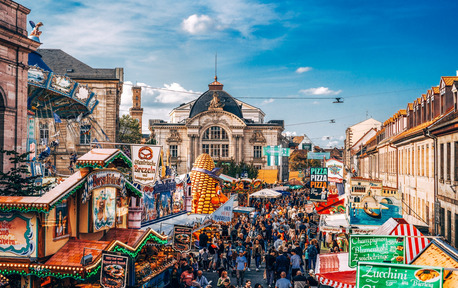
Michaelis Fair – Fürth
The harvest festival procession dates back to the events of the years 1815 to 1817. Continuous crop failures at the time had resulted in repeated famines. In the summer of 1817, by some miracle, a rich harvest grew from the sparsely available seeds and the people were able to breathe a sigh of relief.
The inhabitants of Fürth spontaneously celebrated this joyful event with a harvest festival procession. An elaborately decorated, highly loaded harvest wagon made its way through the city to the parish fair. And the delight of the rich harvest was visible on everybody’s faces after the long years of deprivation. Rather than being an event planned long in advance, the procession was a spontaneous outburst of happiness and joy. This joy has been preserved to this day and still permeates the fair and the procession. And that is exactly what makes it so unique.
Today, the Michaelis Fair is a wonderfully bustling place where young and old alike can enjoy themselves thanks to a unique mix of rides, stalls, attractions, and culinary highlights – all in the heart of Fürth.
Further information: https://michaelis-kirchweih.de
Hof International Film Festival
The Hof International Film Festival is an annual event. In addition to foreign productions, the focus is primarily on German film. There are currently around 180 screenings over a period of six days in two movie theaters and a total of eight auditoriums in the presence of well-known greats of the film industry.
The festival covers virtually the entire spectrum of film far from the mainstream. In terms of the origin of the films, the emphasis is very much on German film. German film school productions (especially debut films) make up a large part of the works. A number of foreign productions are also shown.
Further information: https://www.hofer-filmtage.com/en/
Long Night of the Sciences
The Long Night of the Sciences features amazing experiments, guided tours, lectures, and much more besides. More than 300 institutions in Nuremberg, Fürth, and Erlangen throw open their doors every other year to present the latest research trends and technologies of the future from 5 p.m. to midnight. Besides the region’s universities, numerous research institutions and companies are present, offering exclusive insights into the work that is usually done behind closed doors.
Young scientists can marvel at science up-close as part of the children’s program from 2 to 5 p.m. With numerous workshops and hands-on experiments, the Long Night of the Sciences is an experience for the whole family.
Further information: https://nacht-der-wissenschaften.de
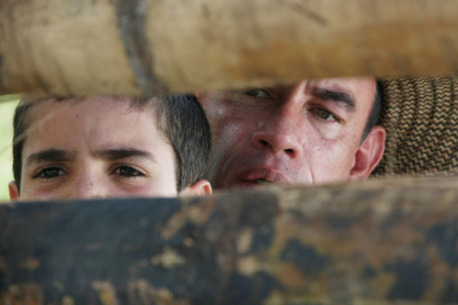
Nuremberg International Human Rights Film Festival (NIHRFF)
The Nuremberg International Human Rights Film Festival is a themed film festival. It is the first in Germany to be dedicated to the subject of human rights. The NIHRFF is the forum for outstanding feature films, documentaries, and animated films that deal with human rights issues.
The festival is a window to the world, presenting a high-quality international program in a highly committed setting – Nuremberg, the “City of Peace and Human Rights.” It is held every other year in the month of October, following the presentation of the Nuremberg International Human Rights Award.
Further information: https://www.nihrff.de
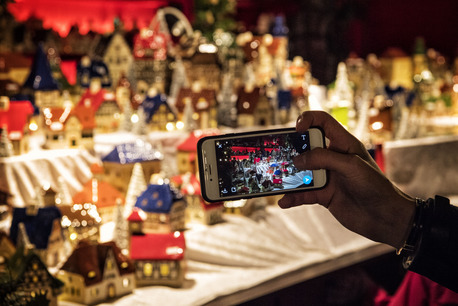
Nuremberg Christkindlesmarkt
Nuremberg Christkindlesmarkt is one of the oldest and undoubtedly one of the most famous Christmas markets in the world. In the wooden booths that form “the little city of wood and cloth,” visitors will find traditional, often handmade Christmas decorations and sweet treats such as Lebkuchen (gingerbread) and Spekulatius (spiced cookies). Additional attractions include the Kinderweihnacht (Children’s Christmas Market) and the Sternehaus cultural program for children, plus the Sister Cities’ Market and the Nuremberg children’s lantern procession.
Traditions and customs linked to the Christkindlesmarkt – why the Nuremberg Christkindlesmarkt is unique
The world-famous Nuremberg Christkindlesmarkt is one of the oldest and most traditional Christmas markets of its kind. The history of the market dates back to the 16th century. In those days, there was already a winter market in Nuremberg, which not only sold Christmas items, but also other goods.
Nuremberg Christkindlesmarkt is an integral part of the festive season in the city and has become an internationally renowned attraction. Today, the market has over 170 booths selling traditional Christmas handicrafts and treats. There is also a large selection of culinary specialties at the Christkindlesmarkt – from gingerbread to Nuremberg sausages and a wonderful range of mulled wine creations.
One special feature of Nuremberg Christkindlesmarkt is the Christkind, or “Christ Child.” The Christkind is the official ambassador of Christmas and comes to the city every year on December 6, St. Nicholas Day, to open the Christmas market.
Further information: www.christkindlesmarkt.de
Bild: Florian Trykowski
Further links
Festivals
Discover other festivals in the Nuremberg Metropolitan Region in our SmartMAP: Perpetual Adoration in Pottenstein, the Franconian Wine Festival in Volkach, the Kornthan Carp Fair, or the Cherry Festival in Pretzfeld.
Parties
Discover other festivals in the Nuremberg Metropolitan Region in our SmartMAP: Ebrach Summer Music Festival, Feuchtwangen Cloister Plays, the Internationale Meistersinger Akademie in Neumarkt, or the New Orleans Festival Fürth.
MUZ - Musikzentrale Nürnberg e.V.
Since its foundation in 1984, the Musikzentrale Nürnberg has served as a scene network for music creators and music enthusiasts in the Nuremberg area, representing the interests of almost 450 individual members, each of whom is involved in one or more bands, but also initiatives and associations from the district of Middle Franconia.

